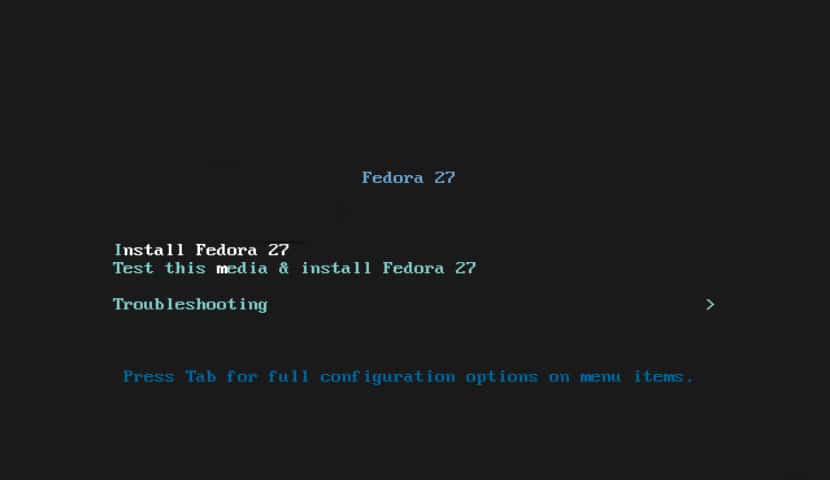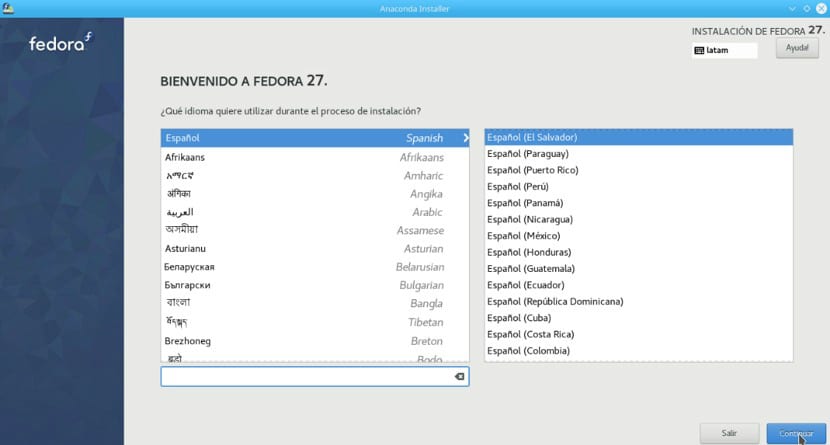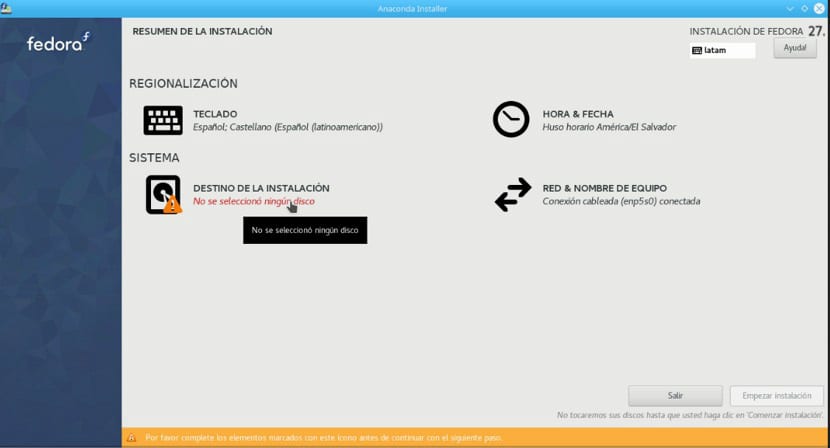
In this new edition of Fedora 27 what has released a few weeks ago, we offer you what is the installation guide for those people who are new to the system as well as to distribution.
Fedora 27 comes with the proposal to improve the user experience through the arrangement of the design, with continuous development and above all with excellent compatibility and functionality, without more to say I leave you this small guide that I hope will be useful to you.
How to Live Aligned with first requirement is to download the ISO of the system to prepare our environment, it is also extremely important to know if we also have the minimum requirements to be able to install the system and not have functionality problems.
To download the ISO we do it from its official site that you can find in this link.
Minimum requirements
To install Fedora 27 we must have at least the following requirements:
- 1 GHz processor or higher.
- 1 GB of RAM.
- VGA compatible graphics card.
- 10 Gb of hard disk.
- Internet connection.
Prepare Installation Media
Windows: We can burn it ISO with Imgburn, UltraISO, Nero or any other program even without them in Windows 7 and later it gives us the option to right click on the ISO.
Linux: You can use any CD image management tool, especially the one that comes with graphical environments, among them are, Brasero, k3b, and Xfburn.
Fedora 27 USB Installation Media
Windows: You can use Universal USB Installer or LinuxLive USB Creator, both are easy to use. Although there is also a tool that the Fedora team provides us directly, it is called Fedora Media Writer from the Red Hat page where it explains how it works.
Linux: The recommended option is to use the dd command.
dd bs=4M if=/ruta/a/fedora.iso of=/dev/sdx sync
Step-by-step installation of Fedora 27

Before starting with the boot of the medium where we recorded the Fedora ISO, we must configure our computer to start with our medium, in addition to that if it has UEFI you must deactivate it, for those who do not know what UEFI is, they can look a little in network.
Once the medium has started, we must choose the first option on the list, so that it begins to load everything necessary to be able to start the installation on our computer.

While inside we will see a screen similar to the one I show, where we will see a single icon on the desktop, we just have to double-click on it to start the installer assistant.
Set installation and system language.
Once this is done, this window will open, where the first part of the configuration will be to choose the language with which we are going to work with the installer and the one that our system will have once installed, for this we only have to look for our language configuration within the list showing us.

Once the language has been selected, now we click on the "Continue" button and we will see the following window:

Select system location.
The next step will be to choose the location of the system installation, if you are using another system and have no notion at this point of what to do, I recommend that you better do this in a virtual machine and thus avoid losing important data.
Now if you are aware of this, it is necessary that here you have the notion of what to do since each case is different.
1.- Choose a hard drive and you choose the automatic option this allows Fedora to take care of partition management and automatically do all the hard drive partitioning work.
This entails losing all the existing data on the disk of your choice as it will be formatted.
2.- Choose the hard drive and in customHere you are the one who takes control of how Fedora 26 will be installed on your computer, for this you have to know about disk partitioning and types of partitions and tables.
Once the configuration is done on your hard drive or partitions, we proceed to the last step, which will be to configure the user with whom you will work within the system.

Creating root user and password in Fedora 27
The last thing that will be is to assign the password to the root user and a user account, the only recommendation that I will give you is that the user and root password that you choose are different and that you can remember.
You just have to wait for the installation of the packages to finish.